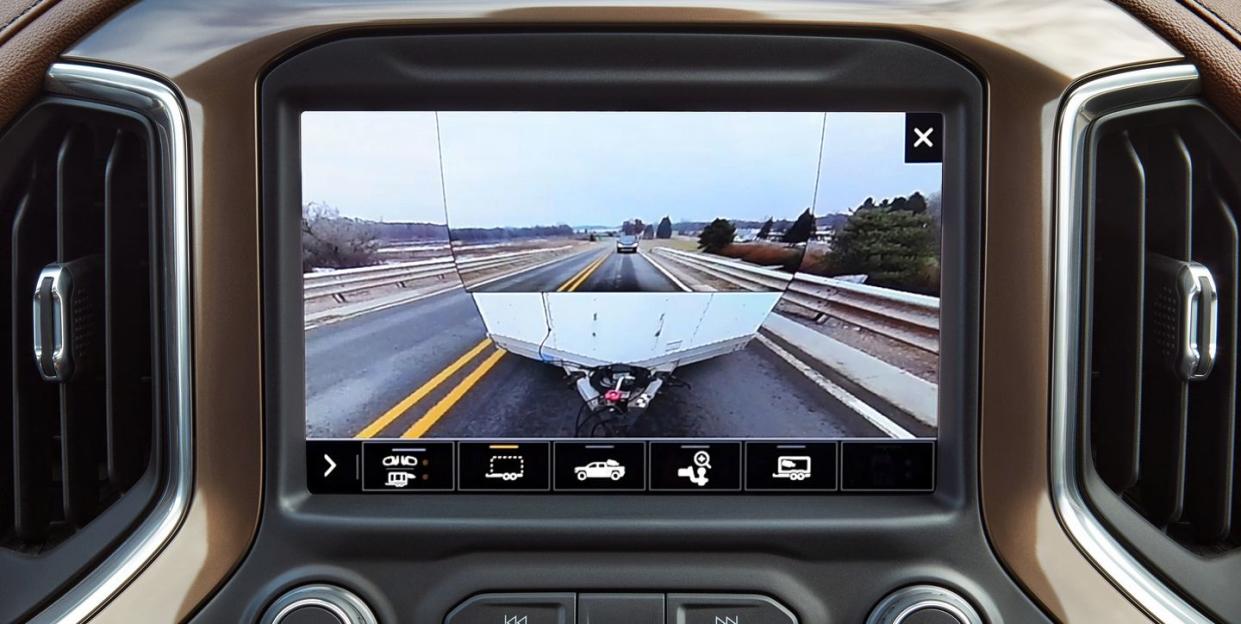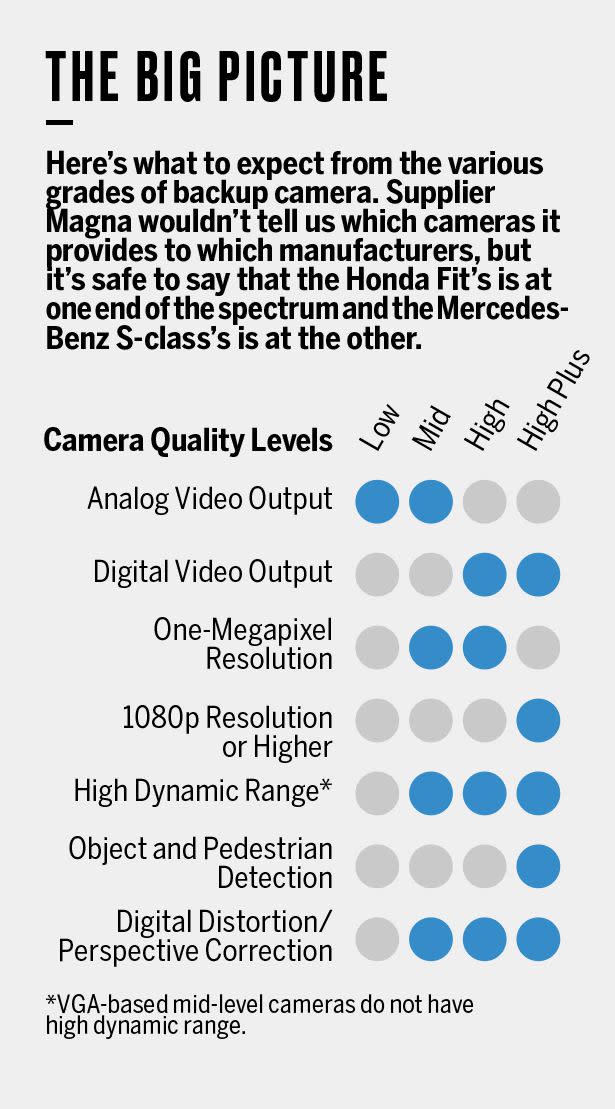Why Some Backup Cameras Are Good and Some Are Bad

As of May 1, 2018, every car built for sale in the United States must have a backup camera according to NHTSA regulations. While the requirement mandates that each camera system meet certain criteria for durability, response time, field of view, and more, NHTSA hasn't set minimum guidelines for image quality. High-definition 1080p screens have been the standard for smartphones and televisions for years, but they're rare in all but high-end cars, and the quality and feature availability of rearview systems varies widely.
"Automotive electronics are generally more conservative and progress slower than consumer electronics," says Kevin Lu, chief engineer of cameras for OEM supplier Magna Electronics. Magna builds backup cameras for cars and trucks across the price spectrum, from the Ford Edge to the Acura NSX.

Lu divides backup cameras into four levels: low, mid, high, and high plus. The lowest of the low-end cameras aren't even one megapixel—for reference, the iPhone XS and XR have 12-megapixel cameras—and generate analog video, a format so old, the FCC has required that all broadcast television stations stop using it and switch to digital. High-level cameras are common in luxury cars and can provide more-complex views such as the 360-degree bird's-eye view that allows the driver to get an overhead look at the car's position. High-definition 1080p hardware (equivalent to two megapixels) is a hallmark of high-plus-level cameras, which will come down the pipeline in greater numbers in the next few years.
Of course, NHTSA's backup-camera edict applies only to the U.S. The European Union doesn't have such a requirement, but there's a provisional agreement to make "reversing safety with camera or sensors" mandatory for 2022. Far East markets don't have one, either. For brands that post their biggest numbers abroad, it makes more sense to throw an affordable camera in their U.S.-market cars than dangle an expensive setup as a selling point on low-margin cars.
"Some OEMs provide low-end cameras on some base-level or even mid-level vehicles to just fulfill the mandate," Lu says. But with luxury cars and pickup trucks, advanced backup-camera features have become must-haves for buyers. Resolution doesn't necessarily get better, but the rearview systems become like Swiss Army knives in terms of their wide utility. Dynamic lines superimposed on the camera's image move with the steering wheel to guide the driver while backing up. Image sensors transmit video in high dynamic range, which both reduces glare from bright sunshine and improves image quality in low light. Some systems allow drivers to view the feed at any time, which is useful if you want to keep watch on a trailer, for instance. Coupled with ultrasonic or radar sensors, and sometimes through a smartcamera alone, the best systems sense objects and pedestrians behind the vehicle and warn the driver of their presence when the vehicle is in reverse.
Image-quality improvements and falling prices for backup cameras "ride the wave of smartphone-image advancement," Lu says. So new developments will trickle down and fix the muddled image quality of low-resolution entry-level hardware. Meanwhile, high-plus-level cameras will arrive on luxury models, bumping high-level cameras to the mid level, and so on down the line. But by then, we could be so accustomed to 4K resolution that 1080p screens simply won't cut it.
From the June 2019 issue
('You Might Also Like',)

